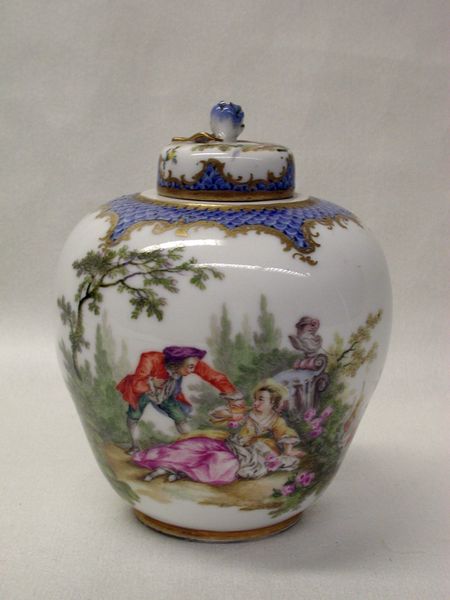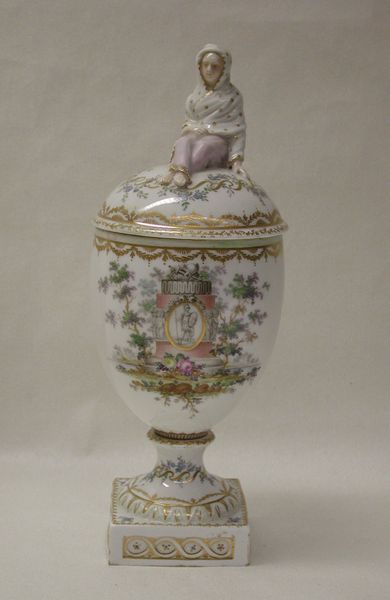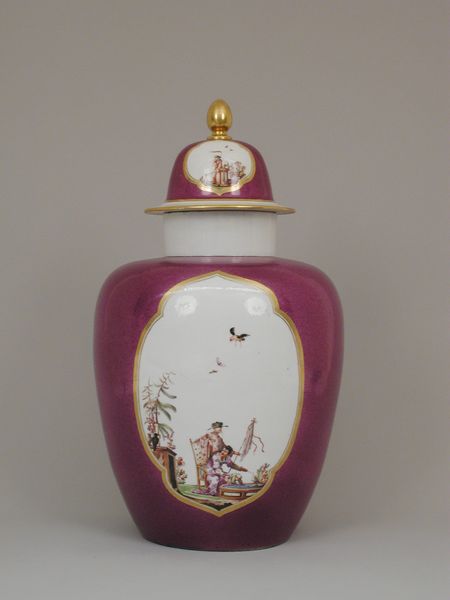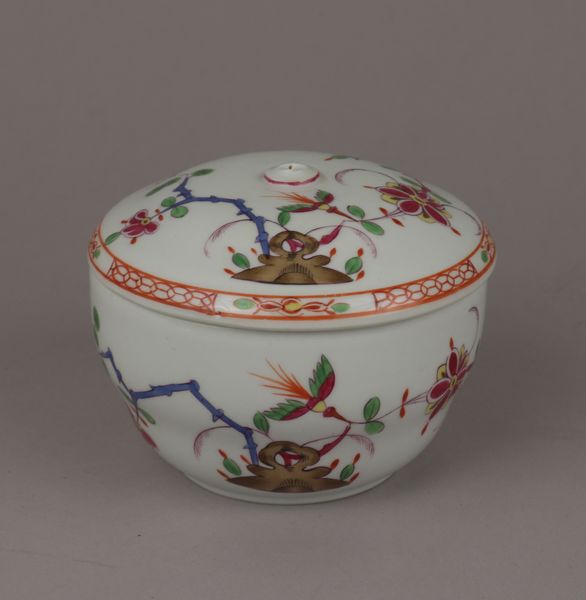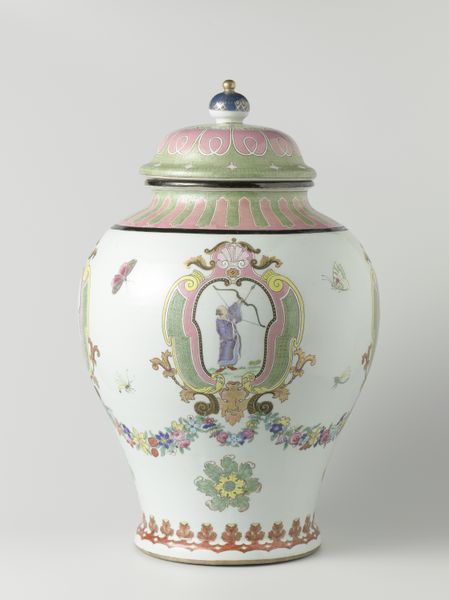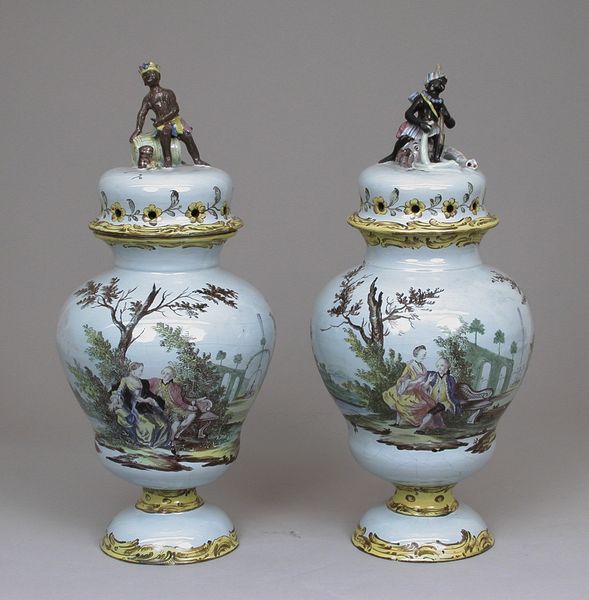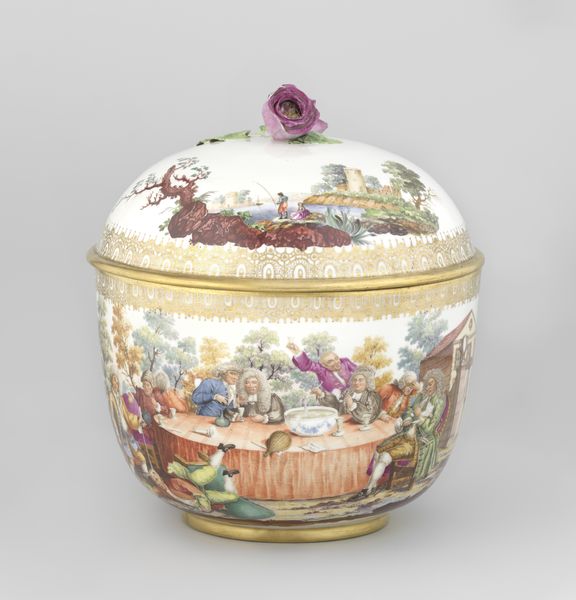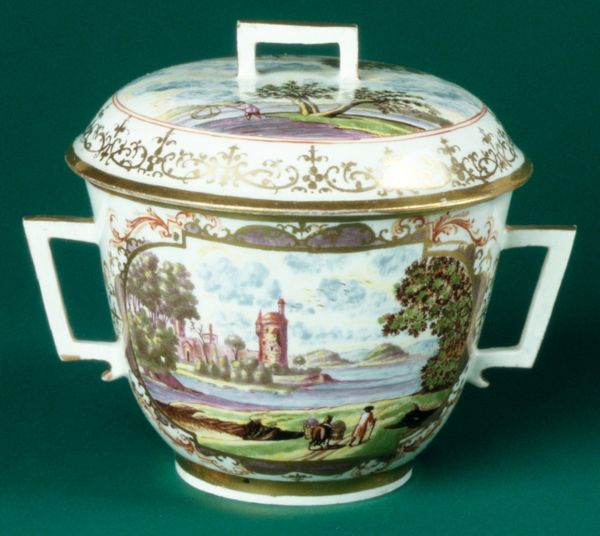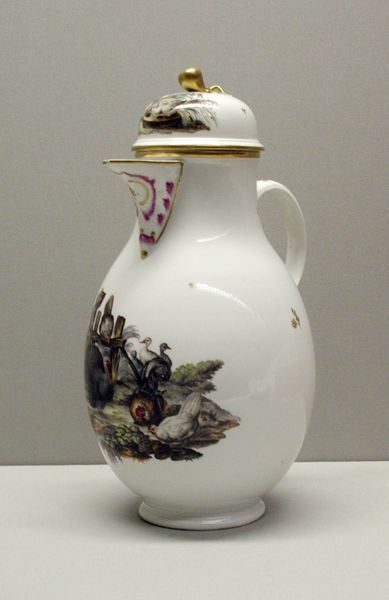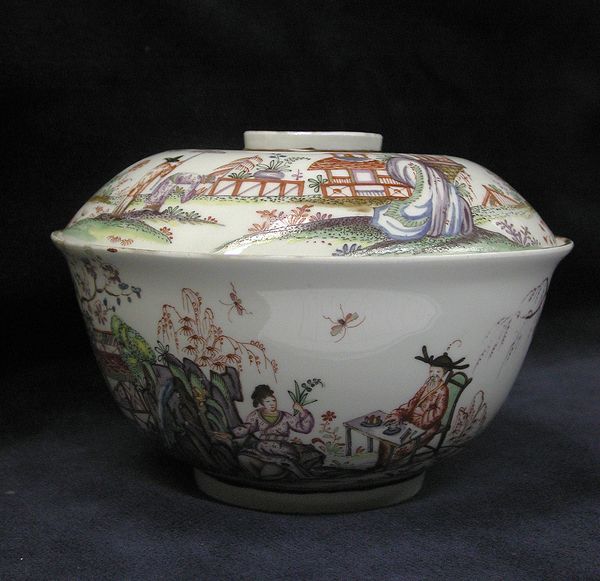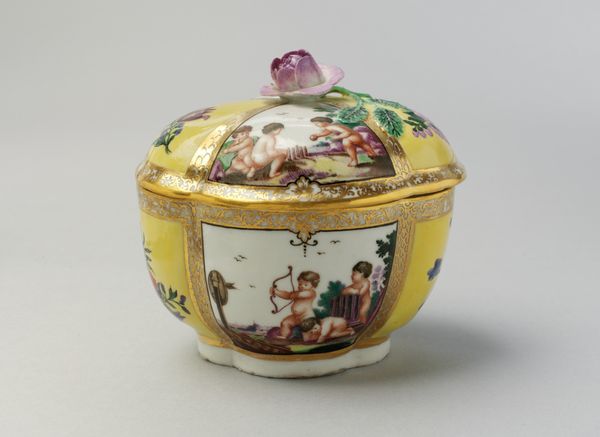
porcelain, sculpture
#
landscape
#
porcelain
#
figuration
#
sculpture
#
miniature
#
rococo
Dimensions: Height: 4 1/4 in. (10.8 cm)
Copyright: Public Domain
Curator: Looking at this delightful porcelain sugar bowl, made by the Meissen Manufactory between 1755 and 1775, now residing here at the Metropolitan Museum of Art, one immediately gets a sense of the rococo period's penchant for the decorative. Editor: Absolutely. The first thing that strikes me is its rather bulbous form and the meticulously rendered figures and landscapes. The whole piece sings with an almost saccharine prettiness—appropriate, I suppose, for a vessel meant for sugar. Curator: The figures do speak volumes, don’t they? Notice the depiction of noble figures in a landscape. This was a deliberate echo of aristocratic leisure, crafted at a time when porcelain production was deeply entwined with political display. Meissen was, after all, established under royal patronage. This bowl wouldn't merely hold sugar; it would signal refined taste and social status. Editor: True, and if you examine the lid, there's this cascade of violet-scaled motifs framed in gold filigree, which adds an extra layer of complexity. And atop sits that wonderfully sculpted floral knob. How does the composition direct your gaze? I find it hard to ignore the vibrant imagery versus the simple functionality of the vessel. Curator: Precisely, and consider its original context: these were pieces often displayed in elaborate cabinets, demonstrating wealth and a global reach because porcelain production, at this time, was highly prized and controlled. The figuration upon the bowl may echo a hunting scene, popular amongst the elites, again grounding this work within aristocratic identity. The bowl itself functions almost as a miniature painting. Editor: It’s like holding a miniature painting in three dimensions! And this combination of sculpture and painting asks us to read and understand it as a confluence of signifiers. The landscapes themselves frame these courtly scenes, reinforcing the importance of controlled space. The colours are particularly potent in how they emphasise the artifice, or play of surfaces and textures, something often overlooked when we assess this piece as simply rococo in style. Curator: It reminds us that even seemingly simple objects can carry dense cultural and political meanings. It leaves you questioning consumption habits within these refined echelons of power, and it definitely goes deeper than just something sweet! Editor: Indeed, delving beneath its pretty surface uncovers how material objects shape social standing—how interesting.
Comments
No comments
Be the first to comment and join the conversation on the ultimate creative platform.
